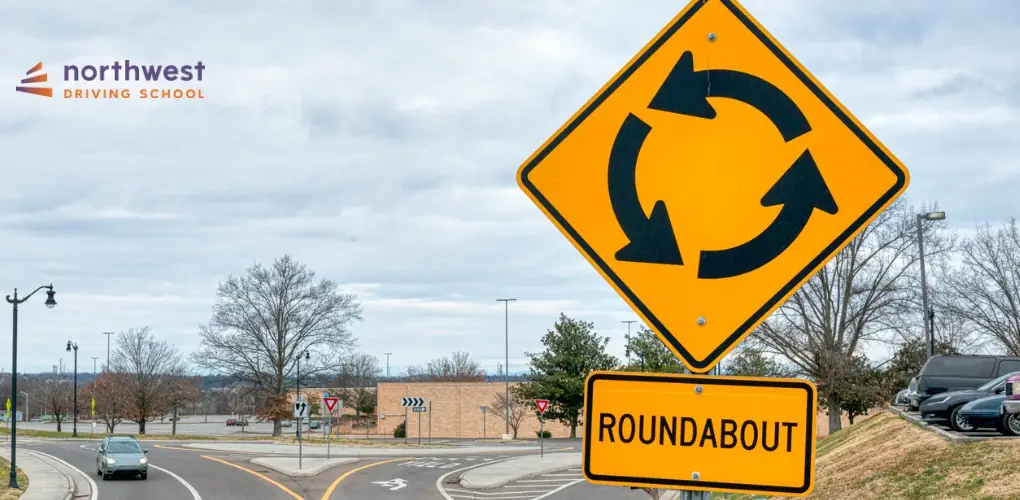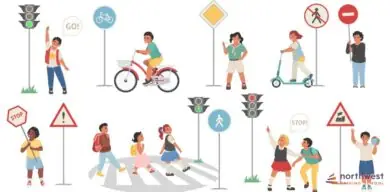- Traffic School
Who Has the Right of Way in a Traffic Circle?

A roundabout is a traffic circle that was introduced to the US in the 1960s. Roundabouts are an alternative to conventional intersections and can help with congestion, safety, and fuel consumption.
They also offer many benefits for pedestrians as well as cyclists, including reduced crossing distances and less complicated intersection geometry.
Though they may seem like a simple concept at first glance, there are some things you should know about roundabouts before entering one.
Read More: Top Driving Safety Tips New Drivers Must Remember
Table of Contents
What is a Roundabout?
A roundabout is a circular intersection that reduces the risk of high-angle crashes. As cars approach a roundabout, they must gradually slow down and yield to those already in the circle before entering it.
Once inside, drivers proceed through one full rotation (counterclockwise) until they reach their exit point on the right side of the road.
Roundabouts are designed to handle more traffic volume than other forms of intersections because there is continuous flow instead of stop-and-go conditions, like at an intersection with four signs or signals and controlled crosswalks for pedestrians and cyclists who wish to enter from each corner.
Who Has the Right of Way in a Roundabout?
Typically, when approaching any type of junction, you should first check your mirrors as well as any surrounding signage so that you don’t have anyone in your blind spot.
In a roundabout, the vehicle on the right has priority and is usually at fault if there is an incident or accident.
Most people assume that vehicles entering from their left-hand side should be given precedence when it comes to the right of way, but this isn’t always true for many reasons.
There are three simple rules you should always bear in mind:
- Pedestrians crossing the street always have the right of way. All drivers and cyclists must yield to them before entering the intersection.
- If you’re entering the roundabout, traffic already inside of it has the right of way. Yield to all vehicles and cyclists before entering.
- If you’re entering the roundabout at the same time as an emergency vehicle that’s flashing red or blue lights and/or a siren, the emergency vehicle has the right of way, and you must yield to it.
Are There Different Types of Roundabouts?
There are two different types of roundabouts: single-lane and multi-lane.
A single-lane roundabout is the most common type of roundabout and requires drivers to yield just as they would at a normal intersection with traffic lights or stop signs.
At a multi-lane roundabout, all lanes are equal – no one has right of way over another – but you’ll need to stay in your own lane throughout the entire circle until you exit out onto the road that runs parallel with it. You can merge into any other open lane when exiting if needed.
Learn to Drive in Nevada Today!
The Northwest Driving School provides the Las Vegas community with live driving and traffic classes taught by seasoned instructors.
All of our driving instructors have passed background checks.
Each automobile is DMV safety-approved, and every member of the Northwest family is committed to providing excellent driver’s education and behind-the-wheel instruction.
At Northwest, you can expect to find outstanding classes, both on campus and behind the wheel, that are engaging, fact-filled, entertaining, and geared toward success.
Sign up or call us at (702) 212-5667 for driving lessons today and see why we’re the best driving school in Las Vegas!


